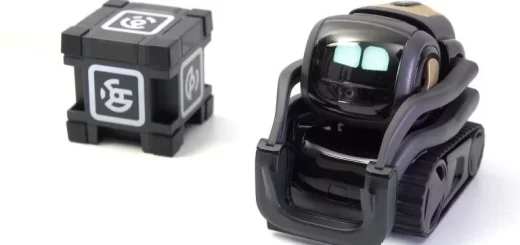Sphero robot review, features, advantages, disadvantages, What can Sphero robot do?
Sphero robots are programmable robotic spheres designed for educational, entertainment, and research purposes. They are widely used in schools and STEM programs to teach coding, robotics, and problem-solving skills.
Sphero robots
Sphero robots can be used in Education to teach STEM concepts in classrooms. They can be used in entertainment, They can Play games and explore creative activities. They are used in prototyping: They are used in experimenting with robotics for beginners and hobbyists.
Features of Sphero robots
Sphero robot has a robust design, a durable, and waterproof casing (in most models). It has a compact, and spherical design for smooth movement. Sphero is compatible with programming platforms like Blockly, JavaScript, and Swift. It uses the Sphero Edu app for coding and controlling the robot.
Sphero robots come with Bluetooth enabled for easy connection to smartphones, tablets, or computers. Sphero robots include accelerometers, gyroscopes, and light sensors for detecting motion, tilt, and brightness. Some models (e.g., Sphero RVR) include advanced sensors like infrared and environmental monitors.
Sphero robots have Customizable LED lights to enhance user experience and feedback. It can interact with apps, games, and activities. It includes pre-programmed games and challenges. It provides lessons on robotics, physics, math, and computer science. It works with various operating systems, including iOS, Android, macOS, and Windows.
What can the Sphero robot do?
The Sphero robot is a versatile device that can perform various tasks, ranging from simple movements to advanced interactive activities. Its features enable both educational and entertainment applications.
The Sphero robot can roll, turn, and spin in any direction. It can follow programmed paths or user-drawn routes. It can perform obstacle avoidance and collision detection using its sensors. The Sphero robot can respond to environmental inputs like light and motion. It can operate in various conditions, including water (for waterproof models).
The Sphero robot can execute commands programmed through drag-and-drop (e.g., Blockly) or text-based coding languages (e.g., JavaScript or Swift). It can respond to real-time inputs from sensors (e.g., changing direction based on tilt or light levels). It can perform loops, conditionals, and other programming logic.
The Sphero robot can respond to commands via smartphone, tablet, or computer apps. It can display colorful patterns using customizable LED lights. It can play educational games and challenges designed for logic and critical thinking.
The Sphero robot can be used in STEM Learning, It can demonstrate concepts in physics (e.g., motion, speed, force, and acceleration). It can teach coding fundamentals and advanced programming techniques. It can engage in engineering projects, such as designing attachments or creating mazes for navigation.
The Sphero robot can act as a controller or character in augmented reality (AR) games. It can play collaborative games with multiple Spheros, such as robot soccer. It can create art by attaching pens to the Sphero and programming it to move across paper.
Sphero robots have advanced features in specific models, Sphero Bolt can display custom graphics on an LED matrix, and interact with other robots using infrared communication. Sphero RVR can integrate with third-party hardware like Raspberry Pi and Arduino, and use additional sensors (e.g., temperature, humidity). Sphero Mini can provide a more affordable entry point for basic activities.
Sphero robot applications
- Sphero robots can be used in classrooms for hands-on coding lessons, physics experiments, and problem-solving challenges.
- Sphero robots can be used in entertainment: They are used in games, races, and creative storytelling.
- Sphero robots can be used in Research: for prototyping and experimenting with robotics and IoT (Internet of Things).
- Sphero robots can be used in Rehabilitation: They are used in physical therapy sessions to encourage movement and engagement.
Advantages of Sphero robots
Sphero robots can be used in education, They encourage hands-on learning of coding, engineering, and robotics. They align with STEM curricula for different age groups. Fun, interactive activities keep students motivated. Sphero robots can be used in creative applications in art, storytelling, and games. They are used in physics experiments (e.g., motion and force), programming competitions, and collaborative tasks.
Sphero robot is suitable for beginners and advanced learners. It is adaptable to various programming levels and project complexities. It is designed to withstand impacts and harsh conditions during use. It is lightweight and easy to transport. It can access a large online community with resources, tutorials, and shared projects.
Disadvantages of Sphero robots
Higher-end models can be expensive, making them less accessible for some schools or individuals. Short battery life may limit usage time in activities. Charging takes time, which can interrupt long sessions. While user-friendly for basic coding, advanced features may be overwhelming for novices.
Sphero robot requires compatible devices and software, which may not be available in all environments. Standard models are best suited for smooth surfaces and struggle on rough or uneven terrains. While versatile, some advanced programming needs might outgrow its capabilities.
You can follow Science Online on Youtube from this link: Science online
You can download Science Online application on Google Play from this link: Science online Apps on Google Play
Sophia robot review, features, use, advantages and disadvantages
Top trending topics on Sophia robots and Can Sophia Destroy humans
Educational robotics, Robot teachers, Social robots review, features advantages & drawbacks
Humanoid robots use, risks, advantages and disadvantages




